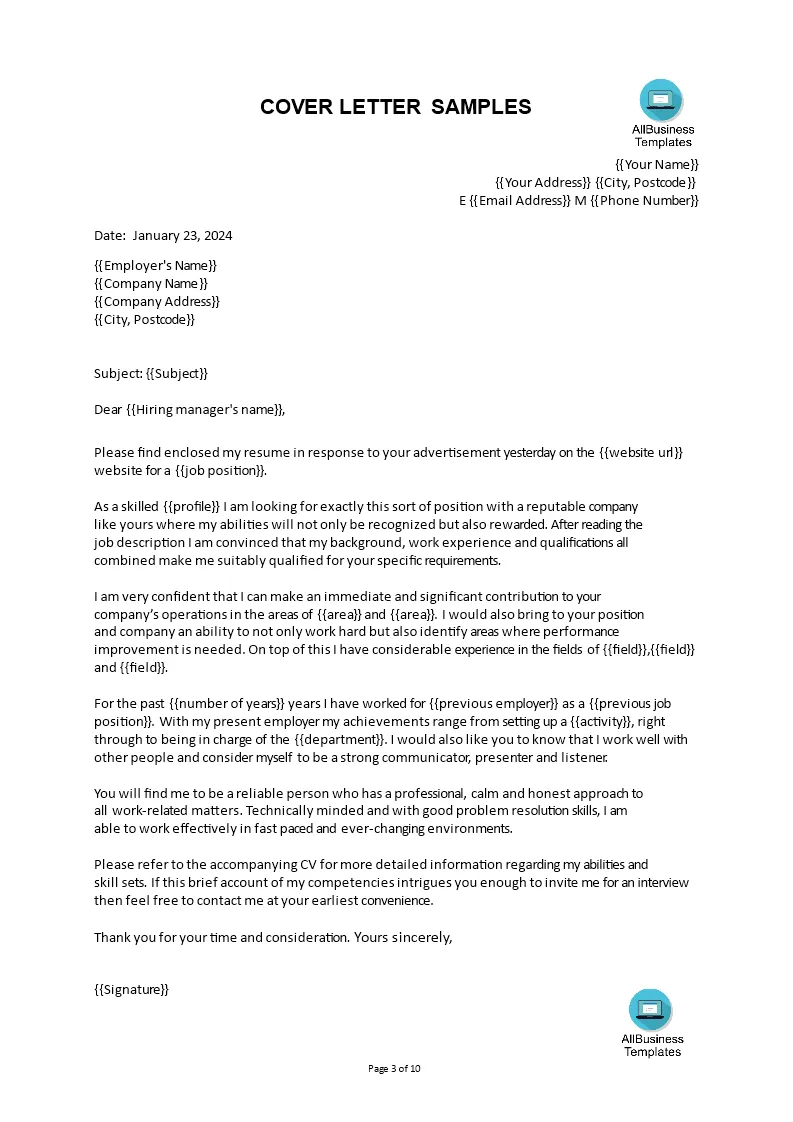Why Use a Cover Letter Template UK?
In the competitive UK job market, a well-crafted cover letter is essential for making a positive impression. It’s your chance to introduce yourself, highlight your key skills and experience, and demonstrate your enthusiasm for the role. Using a template for cover letter UK can significantly streamline this process. A template provides a solid foundation, ensuring you include all the necessary information and present it in a professional format. It is not just about filling in the blanks; it is about strategically showcasing your value to the potential employer and significantly improving your chances of securing an interview. Investing time to properly construct a perfect cover letter will make you stand out of the crowd and will increase the odds of landing your dream job.
Streamline Your Job Application Process
A cover letter template UK acts as your starting point. Instead of staring at a blank page, you’ll have a pre-designed structure and example content to work with. This can save considerable time and effort, especially when applying for multiple jobs. With a template, you can quickly adapt your cover letter to different roles by focusing on the specific requirements of each job. You can easily swap out the key skills and experiences section, customize the opening and closing paragraphs, and ensure your letter directly addresses the employer’s needs. By using a template, you ensure a professional and consistent tone throughout your application. Proper use of cover letter template ensures that you do not forget to add important information.
Save Time and Effort
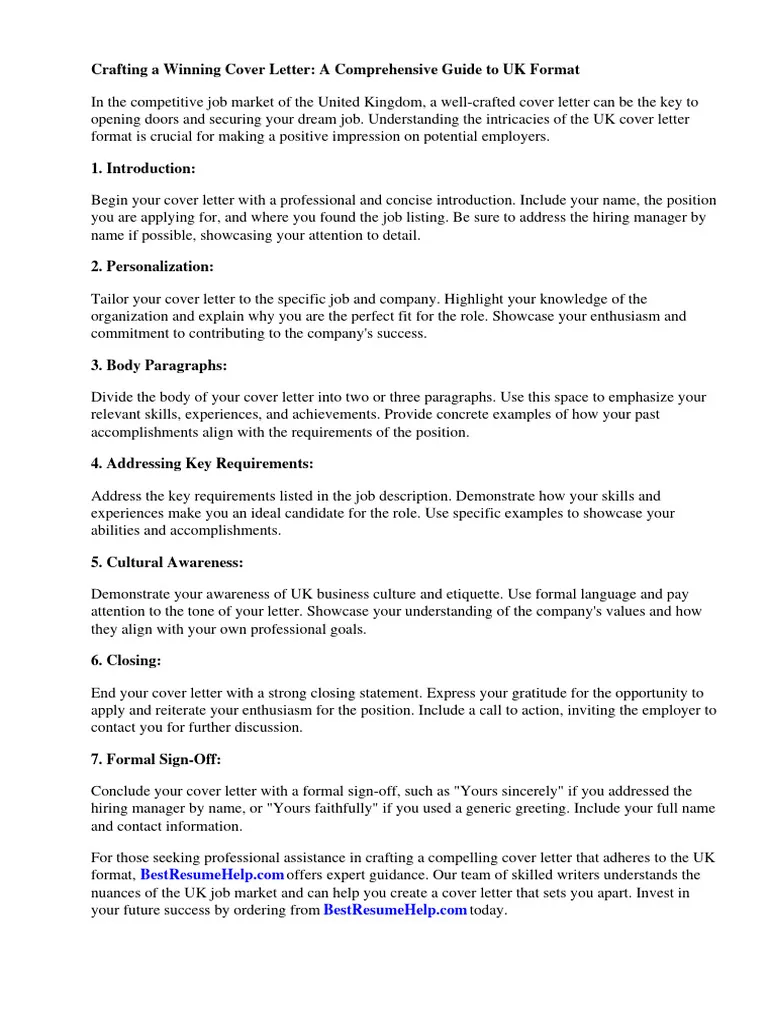
Creating a cover letter from scratch each time is a time-consuming process. A template provides a framework that you can easily modify. Using a cover letter template in the UK market is especially efficient because many employers have similar expectations regarding formatting and content. By utilizing a pre-designed template, you avoid the need to repeatedly research best practices or spend time on formatting. This allows you to focus your efforts on tailoring the content of your cover letter to each specific job application, thus enhancing the impact and relevance of your application. A well-crafted template guides you through the key sections and elements that are essential to make a great impression on the employer, and that will ultimately save you a lot of time.
Essential Components of a UK Cover Letter Template
A comprehensive cover letter template UK includes several key elements to capture the attention of hiring managers. These components should be easy to modify so they can be used in various job applications. It also keeps a professional format and structure. A well-structured template will not only showcase your skills and experience but will also highlight your personality and enthusiasm for the opportunity. It is important to remember that cover letter should be clear, concise, and tailored to each job application.
Contact Information
Start with your contact details. This section typically includes your full name, address, phone number, and email address. Make sure your email address sounds professional. Providing clear contact information is crucial for the hiring manager to reach you easily. Always double-check for any errors. A cover letter template UK should clearly indicate where these details are to be placed. The placement of these details is usually at the top of the cover letter, either left-aligned or centered. Ensure the information is formatted correctly and easy to read, using a font style that is professional and clean. This is the first impression of your cover letter.
Your Name and Address
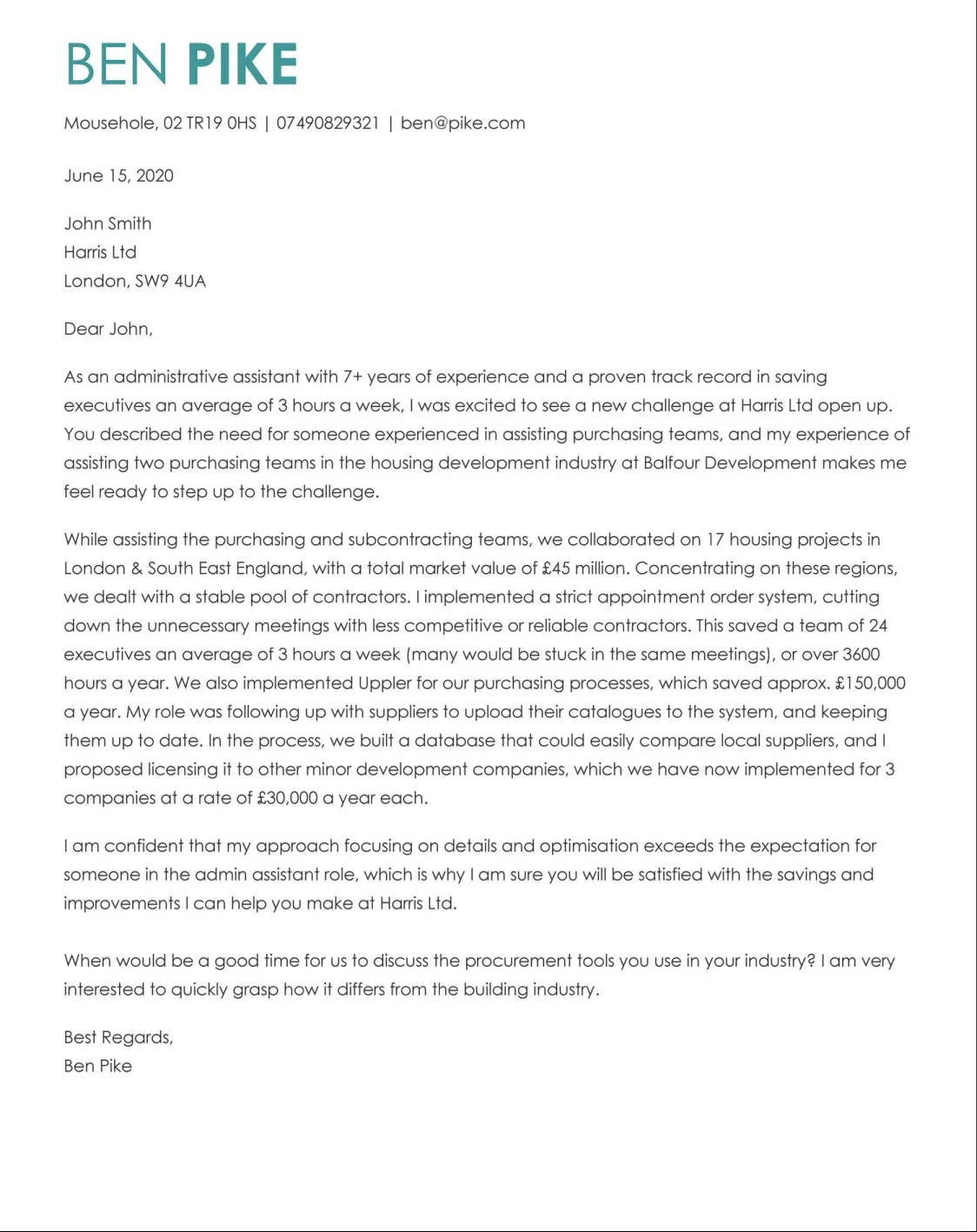
Place your full name and complete address at the top, typically on the left side of the document. This helps the employer verify your identity and location. Make sure your address is current and accurate. If you are applying for an international job, include your country of residence to avoid any confusion. In UK, the address format follows a specific order: house number and street name, town or city, and postcode. Always use a professional and easy-to-read font. Proper format of the address can help the recruiter to contact you in case of any problem.
Date
The date should be included directly below your contact information. It signifies when you wrote the cover letter. Formatting the date correctly is important. The standard format in the UK is usually day, month, and year (e.g., 15 May 2024). Ensure consistency throughout your application. Make sure the date reflects the date you are submitting the letter. This helps the employer to understand the recency of the application. It is always a good idea to check the format if you’re unsure. A properly dated cover letter shows the attention to detail.
Recipient’s Information
Direct your cover letter to a specific person. Find out the hiring manager’s name and title. If you cannot find the hiring manager’s name, try to find the title of the person who will be reading your application. Address the cover letter properly. Use ‘Dear Mr./Ms./Mx. Last Name’ if you know the person’s name. Research the company website or LinkedIn to find this information. Addressing the letter directly shows that you have done your homework and care about the position. If you cannot find a specific name, use a general greeting, such as ‘Dear Hiring Manager.’ However, always try to find a name. It makes the letter more personal.
Hiring Manager’s Name and Title

Include the hiring manager’s full name and job title. This information shows that you have researched the company and the specific role. This personal touch is very important and shows a level of interest and attention to detail. Use formal titles like ‘Mr.’, ‘Ms.’, or ‘Dr.’ followed by the last name. If you cannot find the exact title, use the most relevant title available. Make sure you spell the name and title correctly to avoid showing disrespect. Using the correct information increases the odds of a positive response. Verify all details before submitting your application. Always show a level of professionalism.
Company Name and Address
Include the company’s full name and address. This confirms you know where you are applying. The correct address provides the employer with context and information about the location. If the job is in a specific department, include the department’s address. Double-check the accuracy of the company’s name and address to avoid any mistakes. Check the company website or job posting for this information. It demonstrates your attention to detail and your professionalism.
The Perfect Opening Paragraph
The opening paragraph of your cover letter is crucial. It sets the tone and grabs the reader’s attention. It should clearly state the position you are applying for and how you found it. Express your enthusiasm for the opportunity. Use a strong, compelling opening to immediately engage the hiring manager. Keep it concise and relevant. The perfect opening paragraph makes a strong first impression. It’s your chance to distinguish yourself from other applicants. Clearly state your purpose and demonstrate your interest in the company. A well-written opening increases the odds that the hiring manager will continue reading.
Express Enthusiasm for the Role
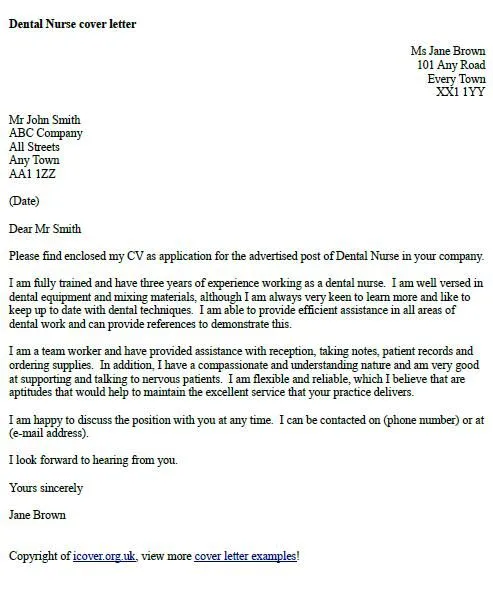
Show genuine interest in the specific job and the company. This can be done by expressing your excitement about the responsibilities or opportunities in the job description. Mention any specific aspects of the role that appeal to you. Demonstrate your understanding of the company’s mission or values. Use phrases such as ‘I am very excited to apply for the [Job Title] position,’ or ‘I am enthusiastic about the opportunity to contribute to [Company Name]’s mission.’ Enthusiasm is contagious and makes the hiring manager more interested. Show how your experience aligns with the company’s needs. This will make your application more appealing.
Mention Where You Found the Job
Indicate where you saw the job posting. Be specific. This is important to help the employer track the effectiveness of their recruitment efforts. State whether you found the job on a specific job board, the company’s website, or a referral. Mention the platform, such as ‘I saw the [Job Title] posting on LinkedIn,’ or ‘I am applying for the position advertised on [website].’ It helps the hiring manager quickly identify the source. It shows that you followed instructions. Also, it helps the company with its recruiting strategies. By properly mentioning where you found the job, you are also showing your attention to details.
Highlight Your Key Skills and Experience
The main body of your cover letter should highlight your key skills and experience. This is the place where you showcase how you are a perfect fit for the role. Focus on the most relevant skills and experiences. Provide specific examples. Use keywords from the job description. Explain how your skills align with the requirements of the job. Make your accomplishments and skills stand out from the rest. The main body should be concise and focused. Tailor the content for each job application. The key is to provide the employer with information that highlights what you can do and how it benefits them.
Showcase Relevant Achievements

Use achievements to demonstrate your capabilities. Provide specific examples. Back up your claims with concrete results. Quantify your achievements with data. Use the STAR method (Situation, Task, Action, Result) to structure your examples. Describe the situation, your task, the actions you took, and the results you achieved. Show the impact you had in previous roles. The aim is to show how you can create value. The most important is to show the results and the achievements from your past jobs. Use clear and concise language. Highlight achievements that are most relevant to the job requirements. Keep it simple. Do not be afraid to highlight your work.
Quantify Your Accomplishments
Use numbers and data to quantify your achievements. Instead of just saying you ‘improved sales,’ state that you ‘increased sales by 15% in one quarter.’ Quantifiable results provide concrete evidence of your impact. Include metrics such as percentages, numbers, and dollar amounts. For example, ‘Reduced customer complaints by 20%’. These provide objective proof of your abilities. Make the examples relevant to the job you’re applying for. This shows your potential value to the employer. Make your accomplishments more persuasive. Data provides credibility and makes your achievements more impactful.
Tailoring Your Cover Letter for the UK Market
The UK job market has its own specific norms and expectations. Tailoring your cover letter to these norms increases your chances of success. This is important to be aware of the subtle cultural differences that may affect how your application is received. Be aware of the language and tone of the UK. Research the company culture. Understand the specific requirements. Adapt your application to fit the UK market. Tailoring your cover letter demonstrates your understanding. It also shows that you are serious about the opportunity. By adapting your approach, you improve the chances of getting an interview.
Understanding UK Job Application Norms
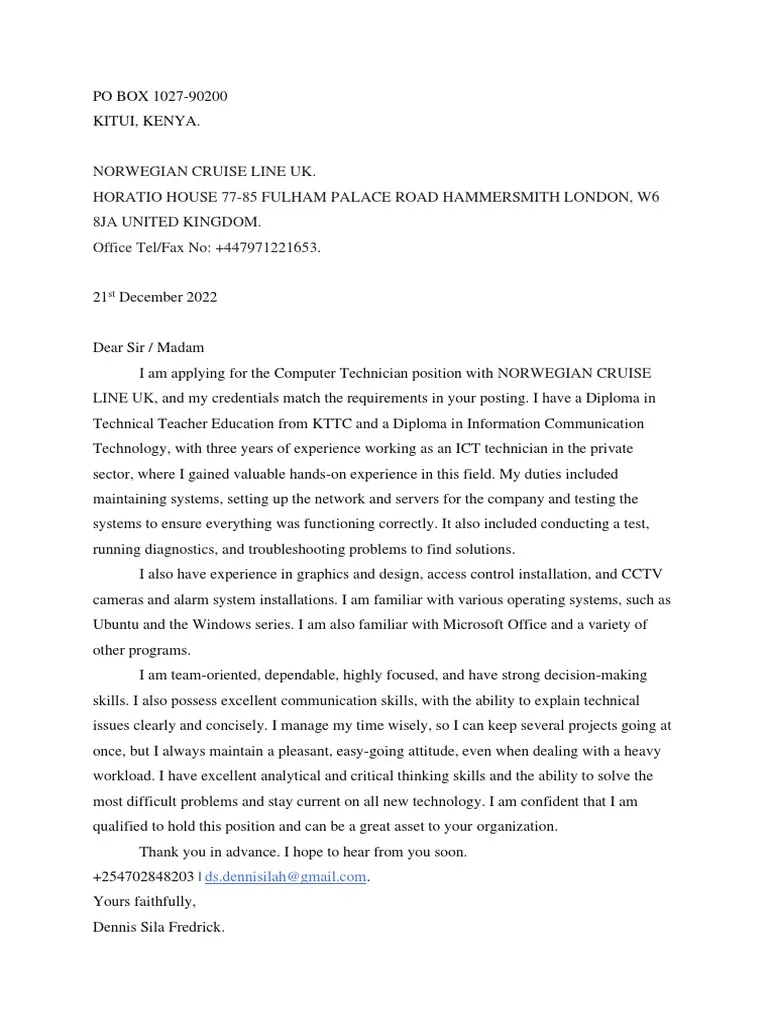
Be aware of the UK’s specific expectations regarding cover letters. UK employers value professionalism and clarity. Cover letters are expected to be concise and to the point. Be aware of the preferred format and style. Research the company’s culture. Show you understand the UK’s work etiquette. Use proper grammar and spelling. Include all the necessary information. Follow the instructions provided. Understanding these standards will increase your chances of being considered. This shows that you have done your homework. Demonstrating that you understand and respect these norms shows respect for the employer.
Using the Right Tone and Language
Use a professional and polite tone. Adapt your language to fit the UK style. Avoid slang or overly casual language. Use clear and concise language. Proofread your letter carefully. Ensure your language is appropriate. A positive tone is key. Show enthusiasm and interest in the role. Be respectful and show your appreciation for the opportunity. Be as clear as possible. Use the right vocabulary. Use a formal tone for most applications. Adapt to the company’s culture. Always maintain a professional tone.
The Importance of Proofreading
Proofreading is an essential part of the application process. Errors can make you look unprofessional. It is very important to carefully check your cover letter. Correct any typos, grammatical errors, or formatting issues. Proofreading ensures your cover letter represents you in the best possible way. It shows that you pay attention to detail. Also, it shows you care about quality. Properly proofread cover letters have a higher impact. They show you are serious and professional. Take your time. Proofreading will improve your chances.
Ensuring Error-Free Content
Check your cover letter thoroughly. Make sure there are no errors in spelling or grammar. Ensure all your sentences are correct. Check all the punctuation marks. A spell checker can catch some mistakes. But, it is not always enough. Carefully read the cover letter. Look for any awkward phrasing or unclear sentences. Ask a friend or colleague to read your cover letter. Their feedback can be valuable. Ensure that the content is clear and easy to understand. Make sure that your message is well understood. Take time to proofread. This will make your cover letter better.
Checking Grammar and Spelling
Check your cover letter for grammar and spelling errors. Errors can make you look unprofessional. Use a spell checker and grammar checker. But, be careful because these tools are not always perfect. Read the cover letter carefully. Focus on the grammar and spelling. Make sure all the words are spelled correctly. Check for any sentence structure errors. Ensure your punctuation is correct. Correcting these errors improves the quality of your application. This demonstrates your attention to detail and professionalism. Always have your cover letter proofread.
Polishing Your Cover Letter Template
Refine your cover letter template to make it perfect. Ensure your application is clear and easy to read. Polishing is as important as writing the content itself. Formatting and presentation make a big difference. Making your cover letter easy to read will improve the overall impact of your application. Always ensure that your template is polished and well-formatted. This will improve your chances of success. You should use your time to make sure everything is perfect.
Formatting and Presentation
Make sure your cover letter looks clean and professional. Use a clear and easy-to-read format. Choose a professional font. Keep the letter concise. Use proper spacing. Use a standard format. Check for consistency. Format the letter in a visually appealing way. This is to make the cover letter easy on the eyes. Ensure the cover letter is easy to read. A well-formatted letter shows attention to detail. It shows that you value professionalism. This will help you make a positive impression.
Choosing an Appropriate Font
Select a professional and easy-to-read font. Avoid using fancy fonts. Choose a standard font, such as Times New Roman, Arial, or Calibri. Use a font size between 10 and 12 points. Ensure the font is easy to read on screen and in print. Keep the font consistent throughout the document. Make sure the font enhances the overall look of your application. A good font choice demonstrates attention to detail. Proper font choice also shows that you are professional. This makes your application more readable.
Keeping Your Cover Letter Concise
Keep your cover letter concise. It is better to be brief and to the point. Avoid unnecessary details. Limit the letter to one page. Make sure it is well-structured. Only include the most relevant information. Focus on your qualifications. Ensure that you highlight the key skills. Respect the reader’s time. Use clear language. Avoid being too verbose. Keeping it concise demonstrates that you respect the reader’s time. Also, it increases the likelihood of it being read. A concise cover letter is more impactful.
Call to Action Closing Paragraph
The closing paragraph is your chance to make a final impression. It should include a clear call to action. This is very important. Express your interest in an interview. Thank the hiring manager for their time and consideration. Use a professional and courteous tone. Be sure to reiterate your interest in the position. This leaves the hiring manager with a strong positive impression. Make the closing paragraph concise. Ensure you state the action that you expect the reader to take. The closing paragraph is very important to show the hiring manager you care about the role.
Expressing Interest in an Interview
Clearly express your interest in an interview. Let the hiring manager know you are looking forward to the next step. Use a direct and clear statement such as, ‘I am eager to discuss my qualifications further in an interview.’ Be proactive. Make it clear that you are available to speak at their convenience. This shows you are eager and available. A strong call to action will encourage the hiring manager to contact you. It demonstrates you are proactive. This increases the chance of being invited to an interview. It shows that you are committed to the process.
Thanking the Hiring Manager
Always thank the hiring manager for their time and consideration. This is a sign of respect. Use polite language. For example, ‘Thank you for considering my application.’ Express your appreciation. This shows you respect the hiring manager’s time. A thank you is an important part of the process. It leaves a positive impression. It shows you are polite. A simple thank you can make a big difference. It is part of good manners. Thank you is always a great way to end any letter.
Final Tips for Using a Cover Letter Template UK
Follow the final tips. They will ensure your cover letter template UK is effective. Customize each letter. Proofread meticulously. Research the company. These are the key aspects. These tips will help you use your template effectively. Taking these actions increases your chances of getting a job. They are important for success. By following these final tips, you are on your way to landing your dream job. So follow the final tips.
Research the Company
Before you start, research the company. Find information about the company’s mission, values, and culture. Visit the company’s website. Also, research on LinkedIn. This will help you tailor your cover letter. Mention specific details about the company. Show that you care about the company. Show you know what the company does. Tailor your cover letter to align with the company’s goals. This will make your application more appealing. This demonstrates your interest. Also, it shows your commitment. It makes you more appealing.
Customize Each Letter
Each job requires a specific cover letter. Personalize each letter. Customize the template for each job application. Modify the content to match the job description. Highlight the relevant skills and experiences. Use keywords from the job description. Customize the opening and closing paragraphs. Show your understanding of the job requirements. Make the cover letter relevant to the role. Each cover letter should be unique. Customize each letter to meet the specific requirements of the job. Personalizing your application shows you care.
Proofread Meticulously
Always proofread your cover letter. Proofread for grammar and spelling errors. Check the format. Review the punctuation. Have someone else read it for you. Ask a friend or colleague for feedback. A fresh set of eyes can catch errors. Make sure your cover letter is error-free. Proofreading ensures your letter represents you in the best possible way. Proofreading helps prevent mistakes. This demonstrates professionalism. The final check is the most important step.
